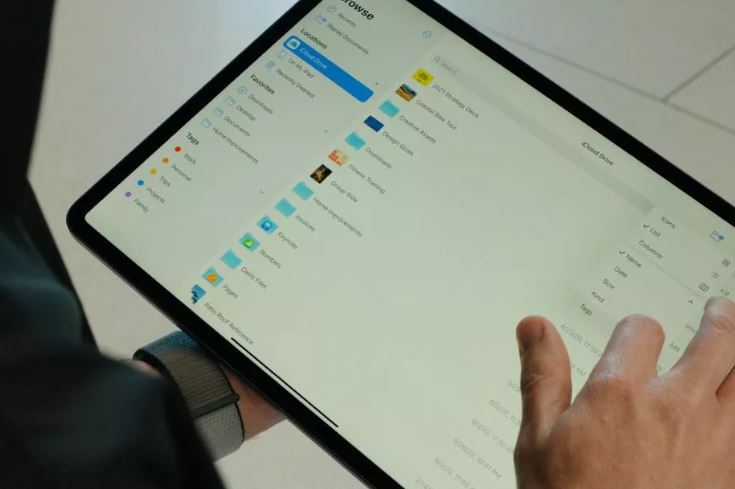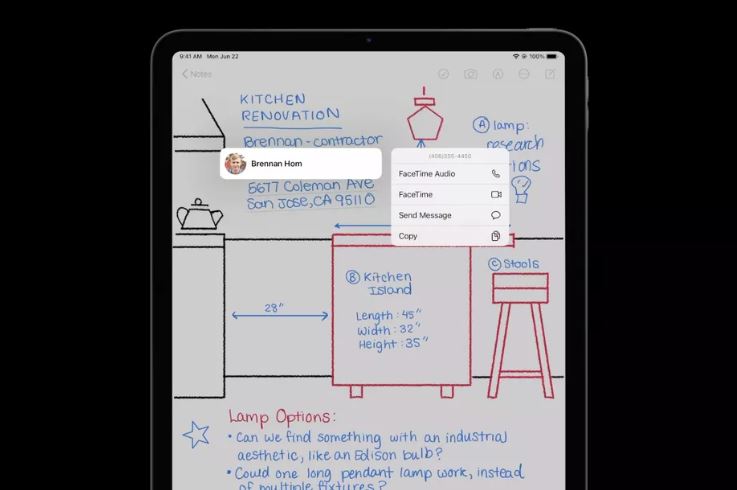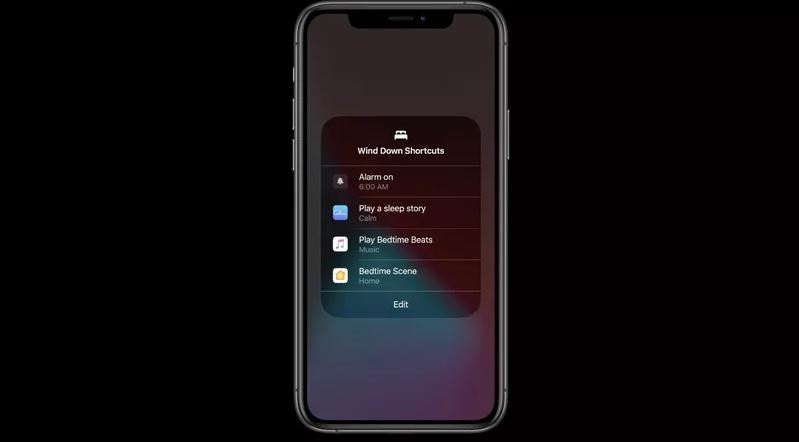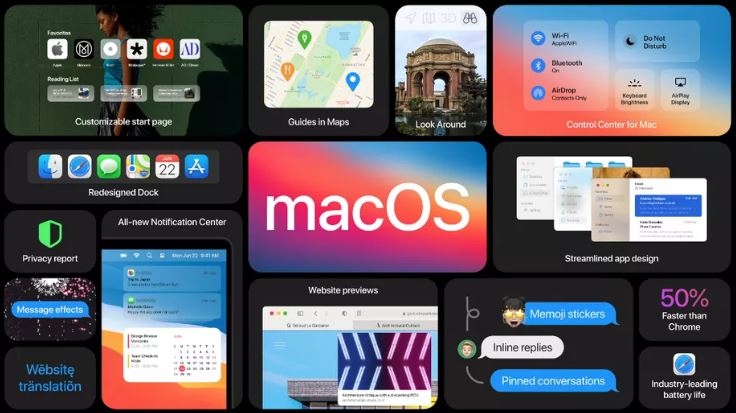iPadOS 14: Apple Pencil and Redesigned Search Engine
Apple has announced iPadOS 14, a new version of its operating system




The other big update to this version is a rebuilt search engine that Apple callsUniversal Search: You can use it to launch applications, search for contacts, documents, or search applications that supportthis feature.
iPad also gets improved supportHandwriting using Apple Pencil. The Scribble function converts handwritten text in any text field into real text. Apple Notes might already be looking for handwritten text as if it were typed. But this update expands the function, allowing you to convert handwritten text and use it wherever you want.
There is another important feature about which AppleI didn’t go into details: now the iPad will allow you to install the default email application and browser. This is a welcome update. iPhone and iPad have been Apple Mail and Safari apps since the platform was created. But not everyone is happy with mail or a browser.
AirPods: easy switching and surround sound
Apple has announced new features that will appear in AirPods: automatic switching between devices and the new “Spatial Sound” feature for 3D sound in AirPods Pro headphones.
New auto switch functionAvailable in AirPods Pro, Second Generation AirPods, Powerbeats, Powerbeats Pro and Beats Solo Pro. It automatically switches audio inputs, depending on which Apple device you are using, through your iCloud account. For example, if you listen to something on your iPhone and then start playing video on a laptop, the audio stream will automatically switch to your computer. Or, if you answer the phone on your iPhone, AirPods will automatically switch from your computer.
In addition, Apple announced a new feature.“Spatial audio” that only appears on AirPods Pro headphones. The new feature will offer 3D, surround sound in AirPods Pro, which will help you feel in a movie theater. It will also be constantly recalibrated depending on the position of your head on any device that you use.
Apple also adds support for its featureAirPods audio sharing for their Apple TV devices, allowing two users to watch a movie together. IOS 14 also adds support for battery notifications that will actively inform you when you need to charge your headphones.
So far, the company has not announced when the new AirPods features will become available to the user.
WatchOS 7: sleep tracking, updated fitness app and hand washing assistance
Apple has announced the latest version of itsSmartWatch WatchOS 7 operating system. The update comes with some important new additions, such as the renamed Activity app, now called Fitness, and sleep tracking.


An update will be released this fall for AppleWatch Series 3 and later. This means that Apple is no longer supporting Series 1 and Series 2. You will need at least iPhone 6S or a later version of iOS 14 to support watchOS 7.
Sleep tracking is perhaps one ofmost sought after features. Apple claims that updating this feature will allow you to set an alarm using the Apple Watch's vibrating alarm.
The new Wind Down mode will pair with the iPhone to enable a series of app shortcuts to snooze notifications, customize your Apple Music playlist, enable a meditation app like Calm, and activate smart home presets via the Home app.
Another function: Now users can customize more detailed dials. Sharing settings with others will allow the new Face Sharing feature. Custom dials will be available as curator watches in the Apple Watch app store or can be used by several people or as links on social networking sites.




Apple Watch claims now new watchOSsupport driving directions and fitness tracking for dance training. Both are part of a broader modernization of activity tracking. Now Apple now combines all these features in a new fitness app and gets rid of the standard Activity.
New feature adapted to currentpandemics, - a hand washing detection system. The movement of the hands and the sound of running water will lead to a countdown. As a result, you will be informed how much time you need to continue to wash according to the recommendations of doctors. Sound and tactile notification will tell you when to stop.
tvOS: HomeKit, Control Center and the new picture-in-picture mode
Apple has announced a number of new features for itstvOS platforms, adding improved support for Apple HomeKit accessories, a new picture-in-picture mode, and Microsoft Elite 2 and Adaptive Xbox One controllers.
tvOS will also allow you to directly control HomeKit accessories through the new Control Center interface, which is similar to the menu available on iOS and iPadOS.

There are also minor updates, such as improved audio sharing with AirPod headphones and support for streaming video up to 4K from the Photos app on iOS devices.
However, many of the improvements to Home and HomeKit do notlimited only to Apple TV. Face recognition is added to compatible HomeKit security cameras, and Home announces contacts that are recognized through the associated HomePod speaker. The Home app now supports smart light sources with various color temperature settings and can adjust them to suit the ambient light throughout the day. New settings make it easy to activate specific devices directly from the Control Center for the user. Now Apple will not require you to delve into the menu.
A tvOS-based HomePod is also receiving a major update: support for third-party music services.
macOS Big Sur with a completely new design
For MacBook users, the exciting part of the day is just beginning. Apple introduced the next version of macOS: Big Sur.
The biggest change is the new externalview. According to Apple, Big Sur has undergone the largest redesign since the advent of macOS 10. The new operating system borrows a number of elements from Apple iOS: a control center where you can switch brightness and a new notification center that stores all your notifications and widgets in one column, Sorts alerts by the most recent and groups related notifications together. Both interfaces are translucent, like their counterparts in iOS.


A number of applications received optimized newDesigns including Mail, Photos, Notes, and iWork. Apple introduced a new search feature in messages, as well as built-in replies, customizable icons and mentions for group chats, a new photo selection interface and other message effects, including Memoji stickers. You can pin up to nine chats at the top of the conversation list, which also synchronizes messages in iOS and iPadOS.
There is a new version of Maps for Mac thatborrows features from the iOS app, including user guides, a 360-degree overview of locations, routes for bicycles and electric vehicles (which you can send directly to the iPhone), direct updates for common ETAs, zone overloading and room maps. Apple also introduced a number of new Catalyst applications that will also get a new look.
The new macOS also presents the largestSafari update since the browser was first introduced. The company claims that it loads popular sites 50% faster than Chrome. The new Safari also has a customizable start page and a built-in automatic translation feature that can interpret entire web pages in seven languages.
Safari also gets extension support,created for other browsers, and a dedicated extension store in the App Store. Safari lets you customize which sites your extensions will run on and when. Now you can easily import history, bookmarks and passwords from Chrome.
There are also new privacy features.and a password monitoring tool with which Safari can help you switch to secure passwords if it detects that any of your saved was involved in data breach.
Apps in the Big Sur App Store Nowwill include the types of data that these applications may collect, and whether this data will be provided to third parties for tracking. Apple has compared this practice with food labels.
On the developer side, Apple has updated SwiftUI to make it easier to create universal apps in its ecosystem and add custom Mac features.
Apple Silicon: Mac switches to its own processors starting late this year
Apple officially switches to its ownsilicon chips for some Mac hardware. Apple CEO Tim Cook has unveiled his plans for future use of his own Apple Silicon with an ARM processor on a Mac. This is a big step, which means that macOS will support native iOS apps and macOS apps side by side on new machines in the future.
Apple will release the first Mac with Apple Silicon at the endthis year. It is expected that a full transition to its own processors will take two years. New Intel-based Macs are still under development, so Apple has not yet switched exclusively to ARM-based Macs. However, this is a big step for Apple.


The biggest addition to this shift to ARM-based chips is the ability for iOS and iPadOS apps to run on macOS in the future.
Apple promises a new level of performance andmuch less power consumption with the transition to their own processors. The company is developing its own line of SoC for Mac with unique features. A common ARM-based architecture for all Apple products should now make it easier for developers to create and optimize applications for all major devices.
Own professional applications will be updated to support the company's new Apple Silicon in MacOS Big Sur. The company hopes that developers will update their applications.
Microsoft is working on Office updates forthe new Mac, and Word and Excel are already running on the new Mac processors, PowerPoint even uses Apple Metal technology for rendering. Apple is also working with Adobe to ensure that their professional applications run on new chips. She demonstrated Lightroom and Photoshop working on the company's new computers.
macOS Big Sur will also include a new versionRosetta. Apple previously used Rosetta to migrate PowerPC to Intel-based Macs, and Rosetta 2 will automatically migrate existing applications during installation. This means that even if developers have not yet fully updated their applications, they should still work without changes. Apple also uses virtualization to run Linux versions on these new Macs.
Apple Launches New Quick Start Programfor developers with documentation and sample code, and offers access to laboratories around the world to help transition existing applications to Apple chips.
Read also
See which organs the coronavirus attacks first and how it happens
Who was the first organism on Earth? Forget everything you knew about the origin of life
See photos of the eclipse that have been taken around the world